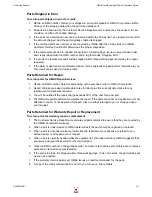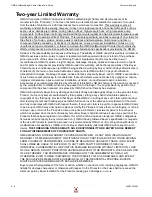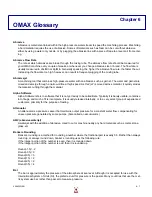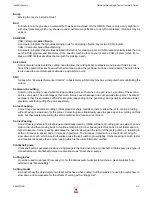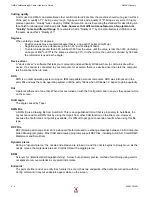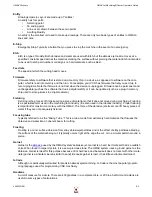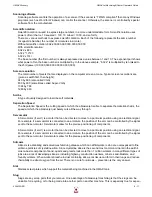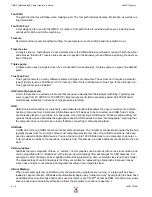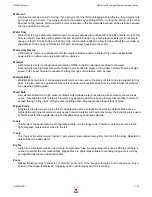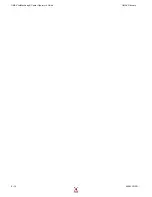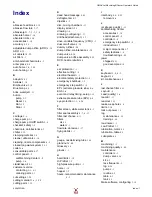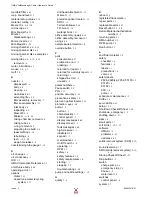
OMAX JetMachining® Center Operator’s Guide
OMAX Glossary
6 - 12
400433D-EN
sive materials such as titanium. However, slugs can also pose a collision threat when machining, so care must
be taken when planning your tool paths to avoid them.
Snap
When snap is turned on (with the Enable Snap Grid command), any time you click in your drawing, you will snap
to the closest point on the grid.
Snap Grid
The Snap Grid is used to make drawing parts easier. When this is turned on, lines and arcs will snap to the clos-
est point on the snap grid.
Soft Limit
Soft limits define the allowed range of machine motion. Make will not move the nozzle outside of the rectangle
defined by the soft limits.
Splash back
The mess that is made when you don't cut all the way through, or the jet ricochets off of a slat. Very common dur-
ing piercing, or when nozzles fail. This is the reason you often see sponges or other guards wrapped around noz-
zles.
Spline curve
A Spline Curve is a smooth curve that passes through two or more points and is generated with a mathematical
formula. The two most common types of spline curves are Bezier curves and b-spline curves (sometimes called
NURBS for Non-Uniform Rational B-Spline). Originally, splines were drafted by using flexible strips that were
guided by points on a piece of paper. The points are called “control points” and define the shape of the curve. A
spline may be “interpolating,” which means that it passes through each control point, or “approximating,” where
the curve is not required to pass through each control point.
Square
A square is a used in fixturing where a metal plate is bolted to the table, and a L shape is cut from it, leaving a
“square,” in which the corner point is exactly known.
Stand-off
The stand-off is the distance between the end of the abrasive nozzle and the material. A small amount of stand-
off is necessary to allow the abrasive jet to work properly. Too much stand-off, however, can increase kerf and
result in poor quality machining. The recommended stand-off is usually about 0.04".
Stationary Pierce
A method of piercing the material where the jet turns on, then stays stationary until the material is pierced. This is
typically a very slow method of piercing, but is fine for thin materials that pierce quickly no matter what. It also
allows you to pierce the material in the minimal amount of space, and is the only option for piercing very small
holes. The hole diameter drilled using a stationary pierce will be significantly larger than the diameter of the mix-
ing tube, especially in thicker materials. As drilling proceeds, the water and abrasive need to escape out back-
wards to the sides of the jet; thereby increasing the diameter of the hole.
Step
The smallest possible amount of nozzle movement.
Stepper Motor
A Stepper Motor is a motor that can be precisely controlled by an external motor controller. It is used in the same
type of applications that require servomotors. Stepper motors can spin quite rapidly, and can stop precisely, mak-
ing them ideal for applications that require precise positioning.
Striation marks
The marks left by the jet as it wiggles around. The faster you cut, the more striation marks form.
Summary of Contents for JetMachining Center 2626
Page 8: ...OMAX JetMachining Center Operator s Guide viii 400433D EN ...
Page 12: ...OMAX JetMachining Center Operator s Guide xii 400433D EN ...
Page 22: ...OMAX JetMachining Center Operator s Guide Safety First 1 10 400433D EN ...
Page 140: ...OMAX JetMachining Center Operator s Guide OMAX Glossary 6 16 400433D EN ...
Page 144: ...OMAX JetMachining Center Operator s Guide Index 4 400433D EN ...


